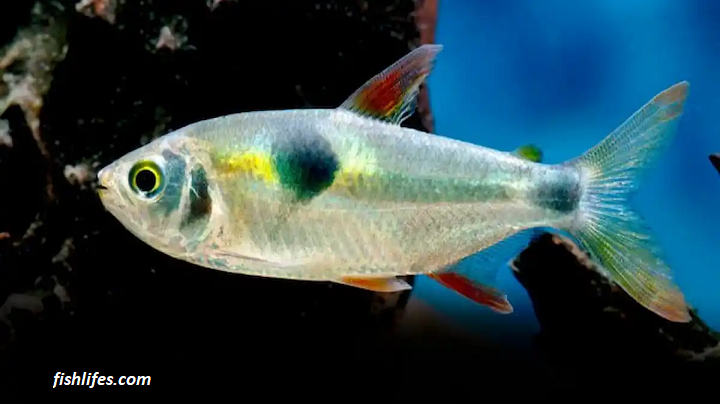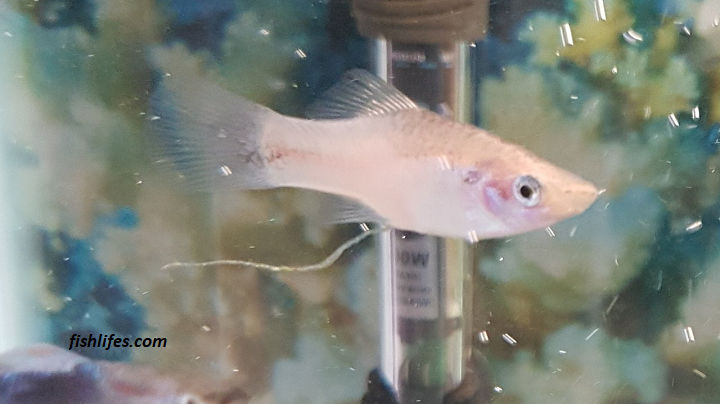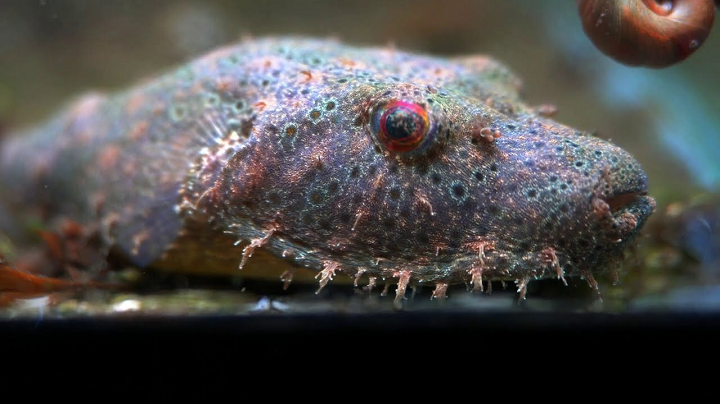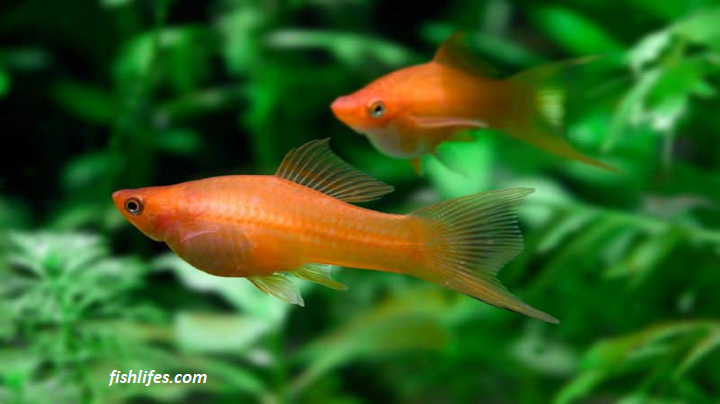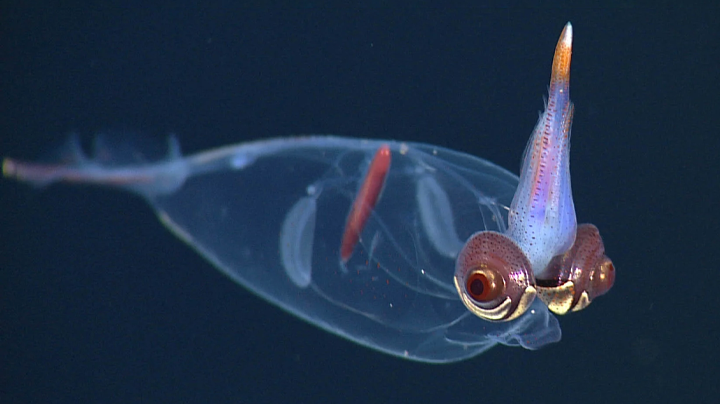Bucktooth Tetras are popular, hardy fish that make a great addition to any freshwater aquarium. These small, colorful fish come with a warning: they may be aggressive toward other tank mates. While Bucktooth Tetras can usually live peacefully in a community aquarium, it is important to understand how properly Bucktooth Tetra care can be done and how to handle their aggressive behavior.
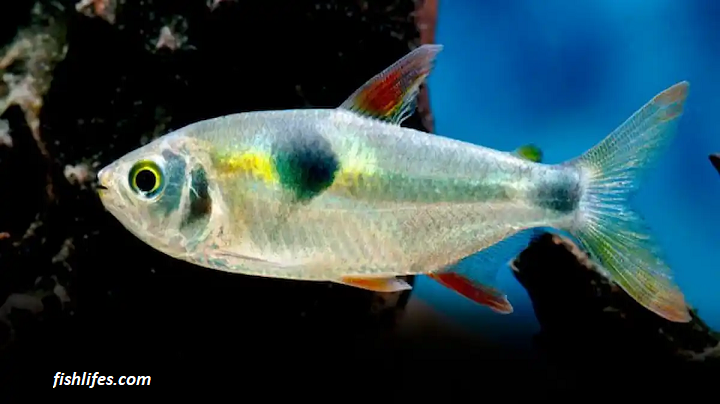
Bucktooth Tetra behaviors
The Bucktooth Tetra is a small, colorful tropical fish that can bring a lot of life and personality to an aquarium. While they have a peaceful disposition and tend to get along well with other species, these fish also exhibit exciting behaviors that can enhance the overall look of any tank.
Bucktooth Tetras are usually active during daylight hours when they swim in shoals around the tank. They love swimming in open areas with plenty of vegetation for hiding spots.
In addition to being active swimmers, these tetras are also quite interested and often inspect their surroundings for food or other potential threats.
When threatened by larger fish, the Bucktooth Tetra shows signs of aggression by displaying their bright red bellies as a warning sign before fleeing into hiding spots.
How big does Bucktooth Tetra get?
This is a fish species in freshwater habitats across much of South America. While they may seem like small, unassuming creatures, their size can vary significantly.
In the wild, a fully-grown Bucktooth Tetra can reach sizes up to 2.5 inches long from tip to tail.
These fish prefer an aquarium environment with plenty of plants and hiding places to feel secure and safe while swimming around.
With optimal conditions, however, these tetras have been known to grow up to 4 inches in length – double the size! To achieve this growth potential, it’s important to provide them with a healthy diet and plenty of oxygen throughout their tank or pond.
Regular water changes are essential for keeping their environment clean and promoting further growth.

How Long Does Bucktooth Tetra Live?
How long do these little fish live? The answer depends on several factors, including the quality of care they receive.
These small freshwater fish can live up to four years with the proper diet and water conditions. Since they are schooling creatures, it’s best to keep them in groups of at least six or more so that they feel secure and comfortable in their environment.
Is Bucktooth Tetra Aggressive?
Regarding aggression, the bucktooth tetra can range from a peaceful community fish to one who may nip at other tank mates and quarrel with species of a similar size.
Generally speaking, these fish are not overly aggressive and should do well in most setups as long as they have plenty of hiding spots and space to swim around. However, they should be kept away from much larger or more territorial species since they may become intimidated or even harassed.
One look Care Guide
| Scientific name | Exodon paradoxus |
| Common name | Bucktooth tetra |
| Type | Freshwater fish |
| Color | Metallic silver with hints of red, green, yellow |
| Preferred temperature | 72°F to 82°F |
| Other water parameters | pH: 5.5-7.5 Hardness: dGH |
| Size | 4-5 inches |
| Care Level | Hard |
| Recommended tank mates | Neon Tetra, Black Widow Tetra, Corydoras Catfish, Otocinclus Catfish, Dwarf Gouramis, Angels, Rainbow Fish, Tiger Barbs, or Rosy Barbs. |
| breeding | Egg layers, hard in captivity |

Bucktooth Tetra Care
Bucktooth Tetra care requires well-maintained water conditions to thrive in captivity. Water should be kept slightly acidic or neutral; pH levels between 6-7 are best.
The temperature should range between 72-84 degrees Fahrenheit, depending on the species of Bucktooth Tetra being kept; some may require cooler temperatures than others.
Regular partial water changes should be performed at least once every two weeks to keep water fresh and toxins-free.
Tank Setup
These small, brightly colored fish can be found in tanks worldwide and make an ideal addition to any community tank setup. Unfortunately, these tetras can sometimes be quite aggressive and cause problems when kept with other fish species.
As such, proper care must be taken when setting up a tank for Bucktooth Tetras.
When setting up a tank for Bucktooth Tetras, it is important to provide plenty of hiding places among the plants and decorations to reduce aggression between them. Aquarists should also keep the group size relatively small (around 6-8), as larger groups tend to get too crowded, leading to increased aggression levels.
Bucktooth Tetra Tank Size
The Bucktooth Tetra is a species of fish native to the Amazon River. It is an aggressive and territorial fish but can be kept in captivity with a few simple steps.
When considering the tank size for these tetras, keeping them in at least 15 gallons of water as they grow up to four inches long is important. This allows enough space for each fish to claim its territory without overcrowding and causing aggression between the other tank inhabitants.
How Many Bucktooth Tetra Kept Together?
There is no one-size-fits-all answer regarding how many should be kept together when it comes to keeping Bucktooth Tetra in an aquarium.
The number of Bucktooth Tetra that can live harmoniously depends heavily on the size of the tank they are housed in.
Generally, a 30-gallon tank or larger is suggested for a group of five or more, while smaller tanks such as 10 gallons may only be suitable for two.
The type and layout of the tank also play an important part in determining how many fish should be kept together. Live plants and decorations that provide plenty of hiding places will help keep aggression levels among the fish low, making it possible to fit more into a given space.
Additionally, providing ample water movement with a strong filter will help reduce stress levels, making it easier for them to live peacefully alongside each other.
Water Quality Condition
they require well-maintained water conditions to thrive in captivity. Water should be kept slightly acidic or neutral; pH levels between 6-7 are best. Hardness should stay between 5-19 DH; oxygen saturation should be at least 80%; nitrogen cycle balance should stay consistent, and salinity levels must stay between 0 – 1 ppm.
The temperature should range between 72-84 degrees Fahrenheit, depending on the species of Bucktooth Tetra being kept; some may require cooler temperatures than others. Additionally, regular partial water changes should be performed at least once every two weeks to keep water fresh and toxins-free.
Monitoring the pH, nitrate, and ammonia levels is essential in maintaining a healthy tank environment for your buckteeth. Keeping the pH between 6-7, nitrates below 20 ppm, and ammonia undetected will help keep the water clean and free of toxins that can harm the fish.
This also helps maintain a balanced habitat where algae won’t become overgrown or contribute to cloudy water conditions.
Bucktooth Tetra Breeding
Breeding these lively fishes is relatively easy with a few tips and tricks.
To successfully breed Bucktooth Tetras, the right environment must be created first.it’s important to keep them in a separate tank, so they feel safe and secure.
Ensure the tank is clean, has plenty of plants and hiding places, and is heated to around 81°F (27°C). You will also need to create an acidic environment with a pH level between 5-7 by adding peat moss or driftwood for tannins.
The tank should not have any sharp objects or decorations that may injure the delicate fry, and it should also be free from strong currents or large predatory fish. Once you have established these conditions in your tank, add 2-4 adult tetras of different sexes.
After the female lays her eggs, the aquarist needs to take immediate action to ensure successful hatching and fry development.
The first step is to separate the parents from the eggs; this can be done by using a breeding net or simply scooping them out with a cup or spoon. Next, remove any remaining unfertilized eggs from the tank, as they can contaminate water quality and increase bacterial growth.
Bucktooth Tetra Male Or Female Identification
Identifying the gender of your bucktooth tetra can be challenging, especially for novice aquarium hobbyists. But with some simple observations, you can quickly identify the male and female fish in your tank.
- The most reliable way to tell if a bucktooth tetra is male or female is by observing its coloration.
- Male bucktooth tetras are typically more colorful than females, with blue spots covering their bodies and red-tipped fins.
- Females tend to have more muted colors and don’t show as much shimmer or shine in the water.
- Males often have an elongated ‘buck tooth’ on their lower jaw that gives them their name, while this feature is less pronounced in females.
- Males also tend to be slightly larger than females when they reach maturity.
How Many Babies Does Bucktooth Tetra Have?
The actual number of fry (baby fish) produced per spawn depends on several factors, including water temperature and the quality of the environment. Generally speaking, the average brood size is between 50-100 young but can range from 25-200 when all conditions are optimal.
Bucktooth Tetra Fry Care
Caring for Bucktooth Tetra Fry requires basic knowledge of their dietary needs and environment. They need plenty of space in their tank as they grow quickly, so it’s important to have an appropriate-sized tank from the start.
It’s best to feed them several small meals throughout the day with a high-quality flake or freeze-dried food specifically designed for fry nutrition. Keeping up with regular water changes will help ensure that your fry stays healthy and happy as they mature into adult fish.

What Fish Can Live with Bucktooth Tetra?
When choosing tank mates for these lively creatures, it’s important to pick the right fish.
The Bucktooth Tetra is a schooling fish and gets along best with other tetras, such as the Neon Tetra or Black Widow Tetra.
They can also do well with smaller catfish like Corydoras Catfish and Otocinclus Catfish. Other compatible companion fish include Dwarf Gouramis, Angels, Rainbow Fish, and some species of barbs like Tiger Barbs or Rosy Barbs.
Feeding Behavior of Bucktooth Tetra
In the wild, bucktooth tetras feed on insects, larvae, worms, and other aquatic invertebrates. In the wild, these fish may be seen sifting through the substrate for food or swimming near the surface to snatch insects from the air.
At night they become more active, often hunting for small prey items in open water or along the bottom of their environment.
In an aquarium setting, these omnivorous fish should be fed with a variety of protein sources, such as live or frozen brine shrimp, daphnia, and bloodworms. To round out their diets and provide additional nutrition, it’s also important to give them vegetable matter like blanched spinach and shelled peas.
Feeding them at least twice daily will help ensure they receive all the necessary nutrients to stay healthy and active.
How Often Should You Feed
twice per day, with each meal consisting of small amounts of food. These fish have very small stomachs and can’t consume large amounts at any time. As such, it’s best to feed them several times a day with smaller meals rather than one large dinner once every night or two.
Additionally, it’s important to remember that these fish prefer frozen or live foods to pellets or flakes – so try to provide as much variety in their diet as possible!
How Long They Can Go Without Food
In their natural environment, they have adapted to feeding on whatever food sources are available in their surrounding area. This means they can go for long periods without a meal before finding something suitable to eat again. Studies have shown that these fish can survive up to 15 days without any adverse effects on their health or well-being.
Related questions
Can Bucktooth Tetra Live In A Pond?
Yes, bucktooth tetra can live in a pond. They require warm water and a pH of 5.5-7.0 with soft to moderately hard water hardness. A well-planted environment is also ideal for them, providing plenty of cover and hiding spots.
Do Bucktooth Tetras have Teeth?
Yes, Bucktooth Tetras do have teeth. They are small, sharp, and conical in shape. The teeth are located on the lower jaw and point outward. Bucktooth Tetras use their teeth to feed on small insects, worms, and crustaceans.
Conclusion
It is a fun, colorful fish to own and cares for when talking about bucktooth tetra care. Maintaining the proper environment for these little creatures may take time and effort, but they are worth it! With an appropriate tank size, water parameters, diet, and tank mates, there is no doubt that these fish will thrive in your aquarium.
The bucktooth tetra requires specific care to ensure its health and longevity in your home aquarium. A well-maintained fish tank with frequent partial water changes is necessary to prevent any bacterial or fungal diseases from affecting the health of the bucktooth tetra.
Also Read : Dwarf Pea Puffer Care | Tiny Yet Competitive Fish |

